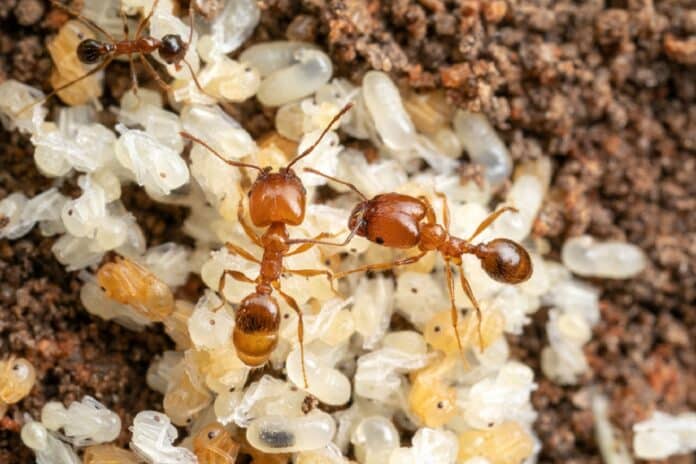A new study of decades of data from museum collections and leaf-litter ant surveys in Florida finds a continuous drop in native ants and an increase in nonnative ants.
From 1965 to 2019, the researchers tracked the abundance of leaf litter ants. Nonnative ants accounted for 30% of the 177 ground-dwelling species discovered in subsequent surveys across the state.
Their dominance developed most noticeably in southern Florida, where nonnatives increased from 43% to 73% over the decades investigated. The nonnative ants are most certainly being imported to Florida with items from all over the world, and the findings indicate a future bereft of native ants.
The University of Illinois Urbana-Champaign evolution, ecology, and behavior professor Andrew Suarez, who led the research with Douglas Booher, a research entomologist with the U.S. Department of Agriculture Forest Service; and Corrie Moreau, a professor of entomology and ecology and evolution at Cornell University, said, “Leaf-litter ants tend to be very small, just a few millimeters in length, so moving through the soil, leaves and other litter is like climbing over hills for them. Many of them are small specialist predators, like trap-jaw ants of the genus Strumigenys, which are solitary hunters specializing in catching small arthropods like springtails.”
Because these ants feed on the litter that accumulates under trees and other plants, moving through the soil, leaves, and other litter is equivalent to climbing hills.
He said, “These communities are sensitive to habitat loss, especially the loss of canopy trees. They also are very susceptible to heat and water stress, as they require humid environments.”
The researchers discovered that native and non-native leaf-litter ants share many characteristics and likely perform some of the same ecological services. However, whether the invasives would fill the same niche is still determined.
Booher said, “Our biggest worry is that the loss of a few key species that act as specialized predators or seed dispersers could have ecological consequences for these already threatened ecosystems.”
Odontomachus brunneus is native to the Southeast United States and is most active at night. The researchers examined how well the ants tolerated sharing their nests with other ants of the same species.
Booher said, “We collected more than 300 live ant colonies and set them up in artificial nests. By marking individuals of the same species from different colonies and introducing them to one another, we evaluated if workers from different colonies were adopted or excluded.”
The majority of non-native workers adopted conspecific worker ants from other colonies. However, most natives rejected the outsiders, providing the nonnatives an advantage.
He said. “effectively act like a unified colony over a large landscape. There are still many more native than non-native leaf-litter ants in Florida. However, the nonnative ants “are becoming more abundant and common. This concerning trend has increased steadily over the past 54 years. Across all regions of Florida, nonnative species have doubled in collection frequency.”
Moreau said, “The research highlights the importance of museum collections for understanding species diversity and loss. Only through comparing past species diversity and abundance with current data can we understand how biodiversity is changing through time.”
Suarez said, “While we are starting to appreciate just how bad insect declines are global, we often don’t have species-level data for many groups. By looking at trends for individual species over long periods, we can get an idea of the possible ecological consequences of these patterns.”
Future research should look into whether specific ecological roles are lost when native ants disappear. Strumigenys egger is a nonnative leaf-litter ant more tolerant of dry conditions than native Strumigenys species.
This study highlights the significance of museum collections in understanding species diversity and decline.
This study was funded by the National Science Foundation.
Journal Reference:
- Douglas B. Booher, Corrie S. Moreau, et al. Six decades of museum collections reveal the disruption of native ant assemblages by introduced species. Current Biology. DOI: 10.1016/j.cub.2023.03.044
